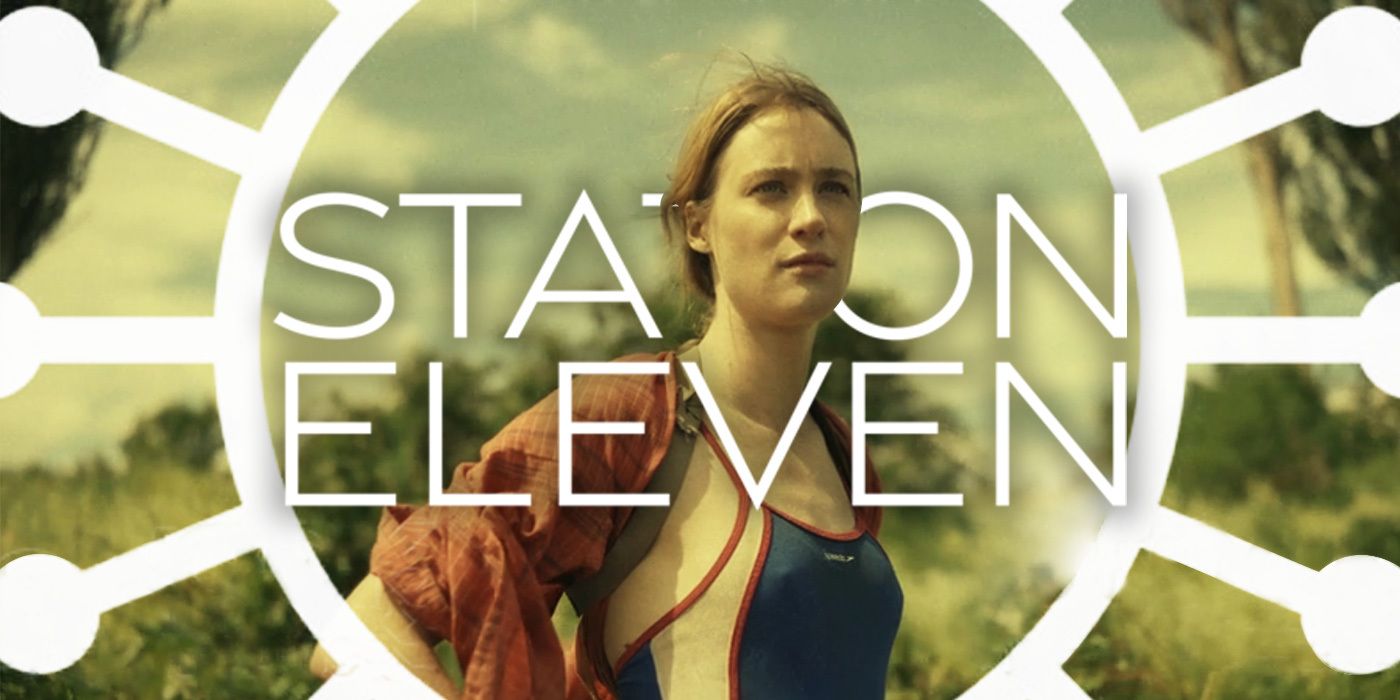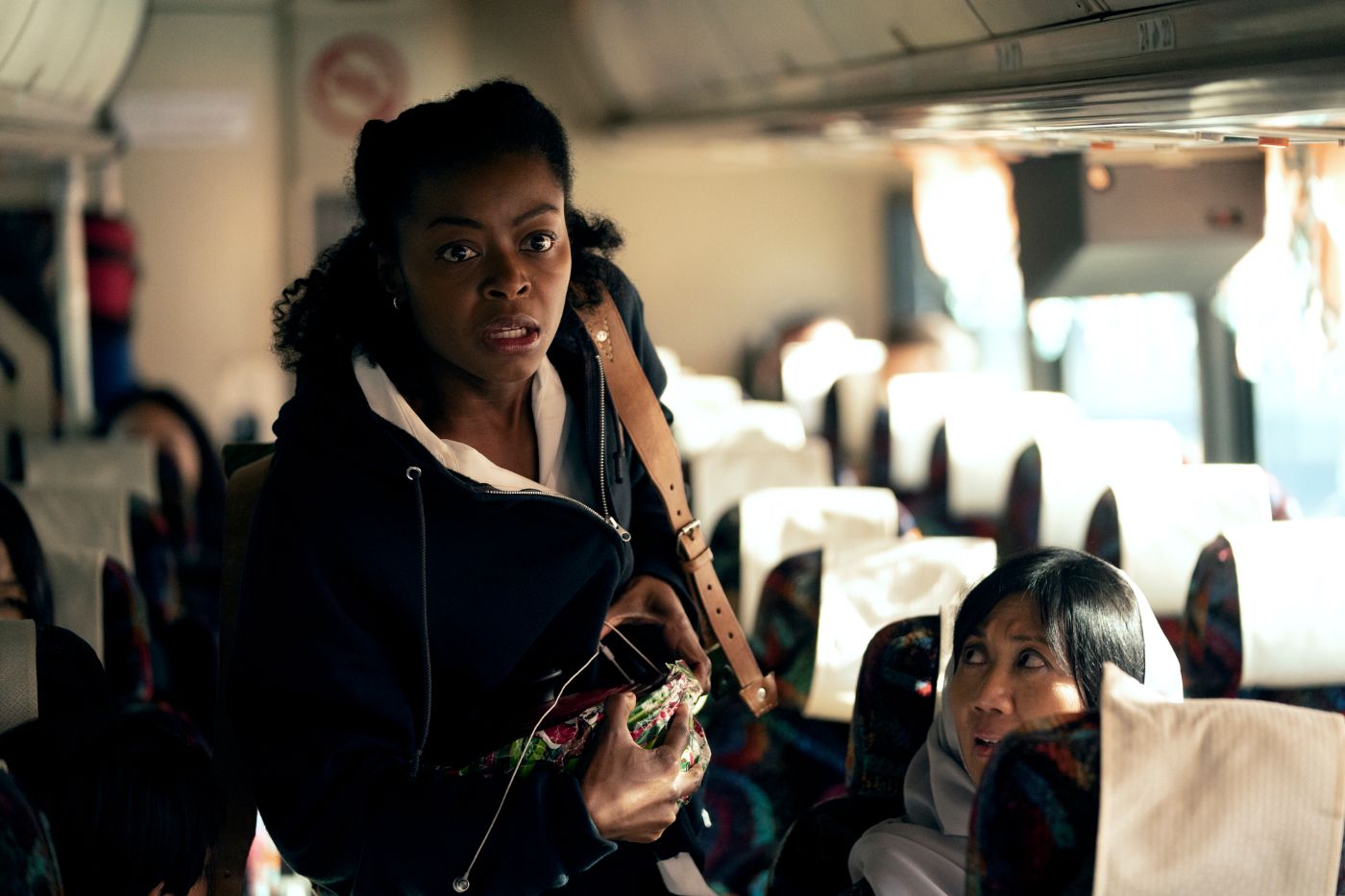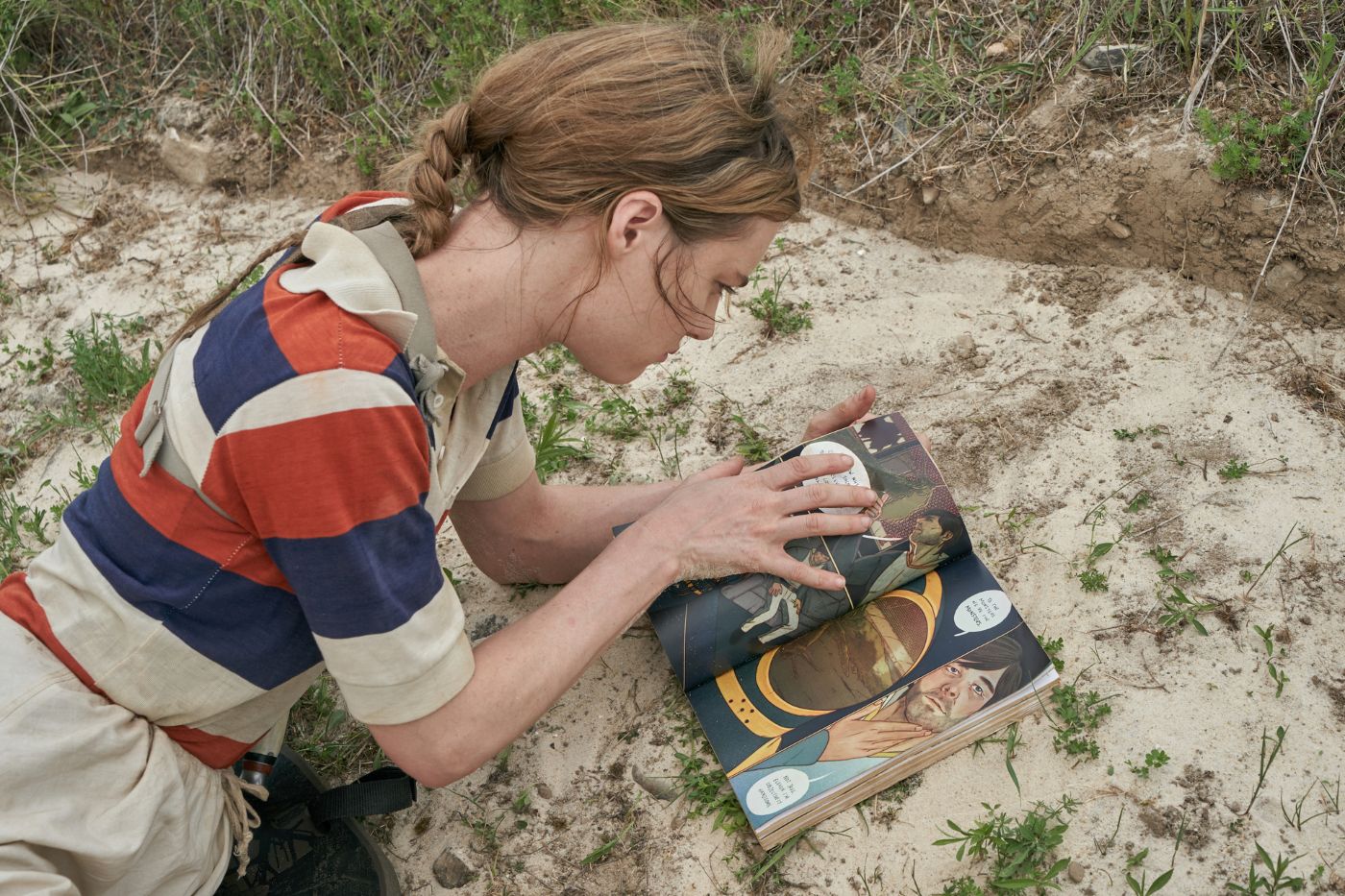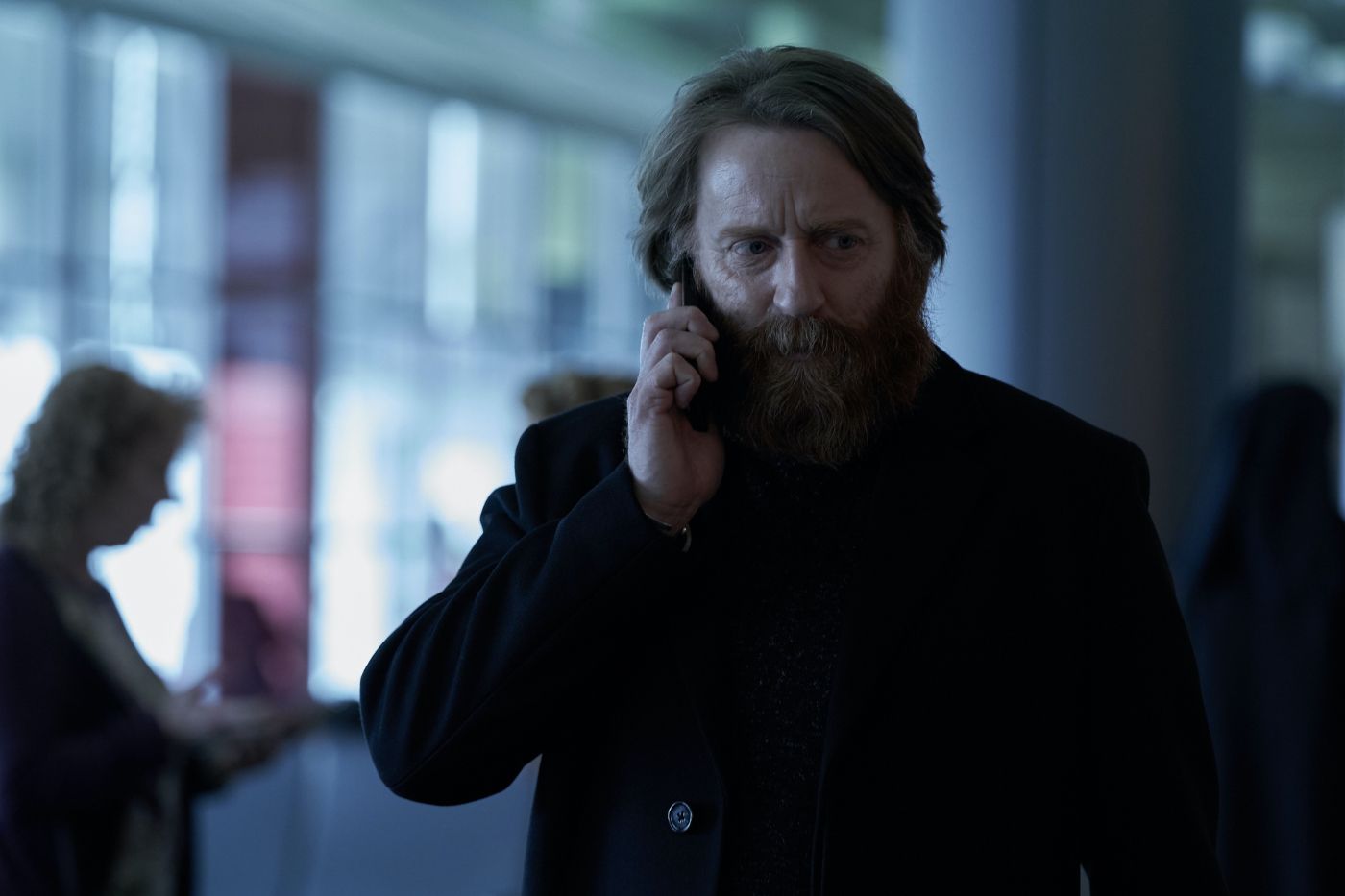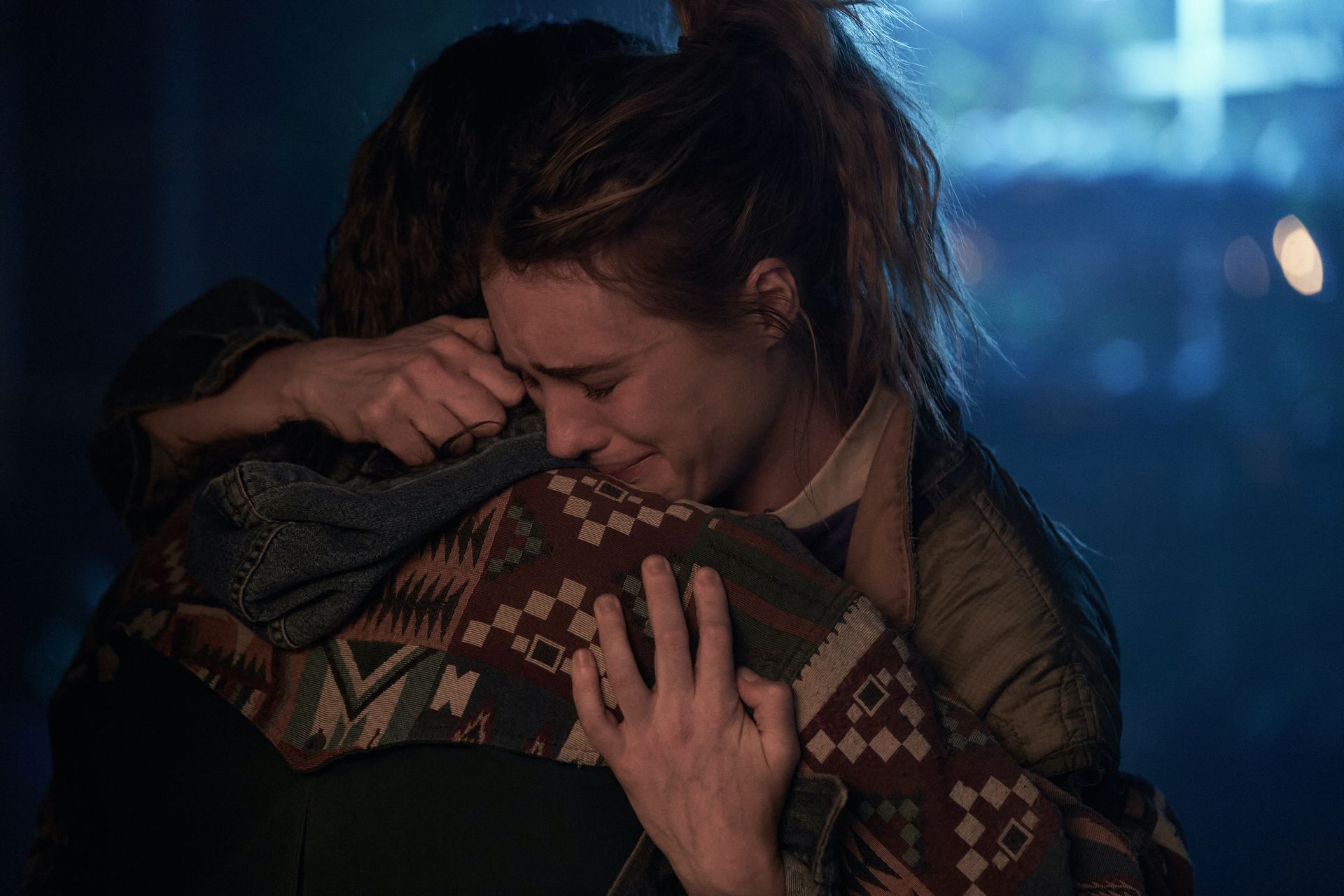HBO Max’s Station Eleven is a post-apocalyptic tale that focuses not on the destruction of the world, but on its renewal. It’s a deeply cathartic experience about strangers, art, and community, and its twisty timeline, braiding pre-, mid-, and post-apocalypse characters and events, threads together beautifully by the end, highlighting how the before and the after echo and shape perceptions, memories, and actions. But as astonishing as it is the first time through when it’s surprising and fresh, a rewatch only deepens the experience. Details and themes become clearer — knowing the destination allows the watcher to see the signposts along the route.
Station Eleven, adapted from the bestselling novel by Emily St. John Mandel, examines how a group of strangers, all connected to each other by the movie star Arthur Leander (Gael García Bernal), respond to a devastating global pandemic that kills 99.9% of the world’s population — and how those who make it through work together to build a new world. When Arthur dies onstage, audience member Jeevan (Himesh Patel) steps up to care first for him and then for his child costar Kirsten (Matilda Lawler). Jeevan eventually brings Kirsten back to the apartment of his brother, Frank (Nabhaan Rizwan), where they form an unlikely family for the early days of the pandemic.
20 years in the future, in a lush post-pandemic world, adult Kirsten (Mackenzie Davis) is a member of the Traveling Symphony, who travels a circular path each summer performing Shakespeare to the settlements around Lake Michigan. They encounter the Prophet (Daniel Zovatto), a menacing figure with a band of child followers, who we eventually learn is Arthur’s son Tyler. His push and pull with Kirsten will lead them to the Severn City Airport, where Arthur’s best friend Clark (David Wilmot) and ex-wife Elizabeth (Caitlin FitzGerald) lead a group of survivors. It is here that, in the emotional high-point of the series, Kirsten and Jeevan will reunite 18 years after having lost each other, sharing a wordless hug that said everything speech could not.
At the center of all of these events is Miranda (Danielle Deadwyler), Arthur’s first wife and author of the titular graphic novel, Station Eleven. Creating the book was a project meant only for herself, a trauma response to having lost her entire family in Hurricane Hugo. She is the eye of the show’s storm: her book gives Kirsten and Tyler something to cling to amidst the upheaval of the apocalypse, and she is ultimately revealed as the savior of the airport’s denizens, when she uses her final living moments to convince the pilot of a plane carrying infected people to “let the dead be gone” and keep the airport safe.
The first watch of Station Eleven is a puzzle, if not quite a typical mystery-box show. As the timelines move in and out of eras, the audience is consistently asked to reevaluate their judgments and assumptions surrounding what we know and what we’ve seen (and these reevaluations shape our new perceptions of the characters from the beginning of a rewatch). Signposts and hints are carefully set, sowing questions along the path that will bloom upon being answered in later episodes. The emotional heights of the finale are the reward of the show’s careful plotting and the audience’s equally careful attention. But far from diminishing the power of those moving conclusions, a rewatch offers even deeper satisfaction and nuance through further connections between strangers, visual and musical cues, and key elements of Kirsten’s journey that are all the more visible when we no longer need to decode the events.
A major reward of rewatching is learning just how much wider the invisible threads of connection between the characters are spun. In Episode 9, we learn that the doctor who delivered all the babies — and ultimately delivered Jeevan to the life of purpose he was unable to find before the pandemic — is named Deborah (Tara Nicodemo). On rewatching Episode 2, we are reminded by dialogue, statues, and literal signs for the department store-cum-birthing center that the first town the Traveling Symphony visits is St. Deborah by the Water. Doctor Deborah becomes St. Deborah, and the birthing center that separated Kirsten and Jeevan 18 years earlier becomes the catalyst for the events that bring them back together.
A rewatch of Episode 4 reveals a glimpse of young Tyler entering that department store; on first watch, that shot is inscrutable, as we have not yet encountered the store or young Tyler. But by identifying him on rewatch, and having seen the conversation he will have with Dr./St. Deborah, the events of the department store and of Tyler’s own journey are brought into play much earlier. This works to not only highlight the web of relationships earlier in the series but to reinforce its themes of connection.
The episode opens with a trio of people who are alone: young Kirsten walks through the snowy forest, young Tyler enters the department store, and Miranda heads to her job interview 20 years earlier, all while their voices recite the oft-repeated passages of the graphic novel. The first time through, we don’t know why Kirsten is alone, or who or where Tyler is, or what knife is being sharpened loudly under the dialogue, but on rewatch, we have all of these answers. We know how Kirsten lost Jeevan, we know Tyler is seeking the pregnant woman he’s been traveling with (and that he’s walking into the news of her death), and we know the knife is Kirsten’s, taken from Frank’s murderer and held to Tyler’s throat in Episode 2. The four voices of adult Kirsten, young Kirsten, adult Tyler, and Miranda share the lines “I remember damage, and escape. Then adrift in a stranger’s galaxy for a long time. But I’m safe now. I found it again.” And then, just the Kirstens: “my home.” Because we know the full breadth of each of these stories, and that they will all, in their own ways, find their homes, we can take this early moment to consider with more depth what damage they faced, what escape and adrift and strangers looked like for them, and what safety will eventually mean. We are also reminded by the sound of that blade of Kirsten’s line in the finale when asked why she’s helping Tyler: “Stabbing you didn’t work.” In this episode’s opening, the theme of what we can do alone and what we can only do in community with others is only fully revealed once we have all the information to see it.
We also only know upon rewatching that the glimpse of Tyler is the moment before he leaves an infant Alex (Philippine Velge) at the same birthing center that is central to all their stories. Rewatching Episode 2, we know he is only partially lying to Alex — he really was connected to a Rose, and she really was a mother (albeit, tragically briefly). And though he does not, we know that Alex is her baby. Having all of this information deepens what seemed to be a simple cover story on first watch — on rewatch, we can see young Tyler in this adult counterpart, identify the ways in which his behavior is rooted in loss, and see the yearning for connection that undergirds him. He repeats constantly that "there is no before," but in rewatching we can appreciate all the ways in which his before shapes his now.
Rewatching with full knowledge of where the storylines are headed also frees us up to notice visual and music cues, and one major visual throughline is the overhead shot. Sometimes these shots recall Doctor Eleven, alone on his space station, watching over Earth with detached benevolence. Only Miranda and Kirsten encounter him at eye level (and, in some clever shots visible on rewatch, sometimes he encounters them without their knowledge); everyone else is at an outer-space remove. Tracking these repeated overhead shots on rewatch also illuminates how central hurricane imagery is to building the emotional journeys of the characters. We see Arthur laying on the stage, surrounded by a spiral of rocks; we see Clark splayed on the airport rug, surrounded by a spiral of the Great Lakes; we see Kirsten collapsed on the forest floor, surrounded by a spiral of dead Red Bandanas.
Connecting these hurricane-style shots with the information we have when rewatching, we can link these characters’ journeys and what the show is saying about their flaws and grace. These are destructive people, or people in moments of destructiveness. But as hurricanes destroy, they also leave behind a changed landscape. By the end of the show, we know Arthur connects everyone. Kirsten protects her family, which by the end extends to everyone in the airport. For all his failings, Clark keeps the airport safe for 20 years. And at the eye of it all is Miranda, in her own repeatedly sketched-out hurricane/solar system, destroying her own life but making other lives possible.
Dan Romer’s stirring and inventive score also offers rewards for rewatchers. As this theme of the necessity of connection continues to surface, the ways in which characters’ musical themes morph and echo and weave in and out of each other’s also becomes clearer when we have the freedom to listen for it. But one theme, in particular, becomes deeply moving when rewatching, and indicative of the way the show is always, insistently, telling a story about the ways in which we can come together even after falling apart: the theme from Kirsten and Jeevan’s climactic hug.
For a minute and a half, the only sounds of the reunion are the characters’ breath and the gentle, yet stirring, string score. With that unforgettable moment imprinted on the audience, that musical theme takes on new meaning when rewatching. The melody shifts and recurs several times throughout the show: it plays after Jeevan and Frank argue over Frank’s heroin use in Episode 7, culminating with Jeevan’s admonition “We have a kid now.” It plays in dramatic, organ-based tones after Jeevan is mauled by a wolf trying to retrieve young Kirsten’s book. A related but modified version plays under Kirsten’s apology to her new-mother friend in Episode 2, as she acknowledges her own inability to say goodbye while asserting (over scenes of young Kirsten and Jeevan) that they cannot know her friend will be there next summer. And this same modified version underscores another hug: Jeevan and future wife Lara at the department store with her unborn baby, who Jeevan will raise, between them. Because we know Kirsten and Jeevan will reunite, every use of the melody reminds us of that reunion on rewatch. It’s a consistent tug, a promise, subtly preparing us all along for that catharsis, while simultaneously underlining the difficulties and struggles of making and maintaining connection that earn so entirely the moments of communion.
Perhaps the simplest, and yet most impactful, element that becomes clearer on rewatch: on some level, Kirsten has been looking for Jeevan for the better part of two decades. In Episode 2, dialogue that wasn’t completely decipherable the first time through becomes crystal clear the second time: Alex tells Kirsten she knows the woods remind her of Jeevan. Kirsten references going by the cabin, as she seems to do every year, but finding “no sign of him.” She laments the loss of the internet by noting that “you could find anyone.” On the first watch, we would be forgiven for thinking she assumed him dead, or blamed him for leaving. But on the second watch, we see that some part of her has never given up on finding him again. She has lived through the trauma of his loss, to some extent — we see her and Alex, her own surrogate daughter, freely playing on the water slide that 18 years earlier was frozen solid when she and Jeevan separated — but has never fully released the idea of seeing him again. This newly surfaced hope, evident on a rewatch through all of her trauma responses, through the tragedies, and through the other goodbyes she struggles against, provides the show with a new heartbeat, and knowing it will be rewarded with that hug and the long-wished-for goodbye makes their reconnection all the more moving.
There is so much more to glean upon rewatching this dense and deeply felt show. The more full, specific, and nuanced each character’s journey becomes with each rewatch, the more moving and rewarding the series. With each new detail, Station Eleven’s themes — of connection and reconnection, of the ways we care for one another in our own broken and flawed but persistent ways, of how together is the only way to come through trial — burn insistently brighter.

